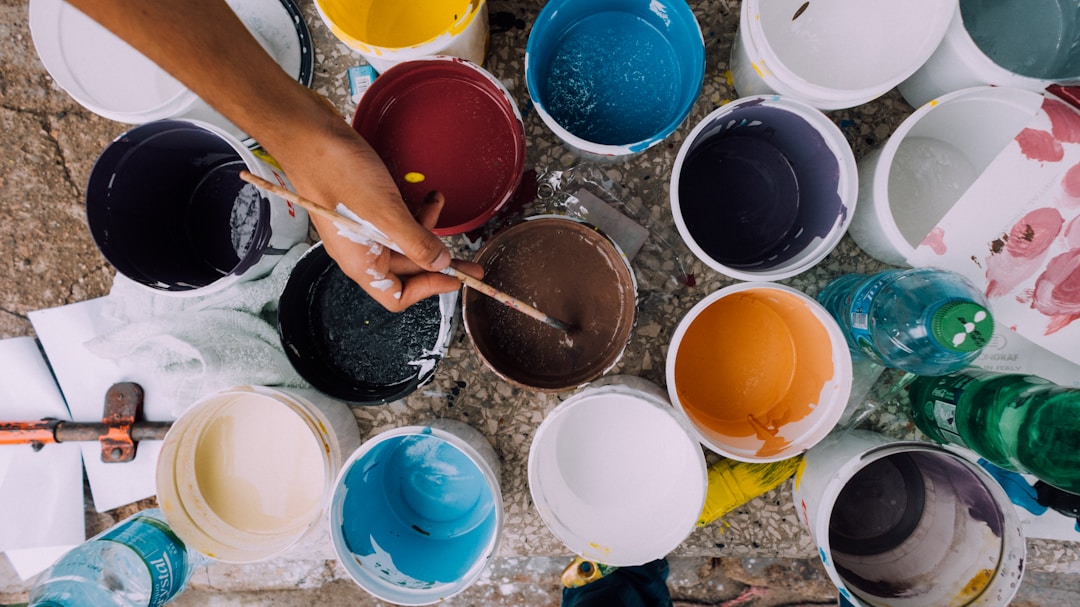House Painting Tips for Homeowners
Enhancing the overall appeal of your house is often a substantial undertaking, but certain improvements, like a fresh coat of paint, can truly transform your home. The bristle strokes of paint not only improve aesthetics but also extend the structural longevity of your dwelling. If you’re planning for a remodel, this guide packed with house painting tips may play a vital role in your project. Keep reading to brush up on your knowledge.
Exploring the Importance of House Painting

House painting elevates the aesthetic appeal of your home while defining its character and personality. The right paint color can enhance the architectural details of your house and provide a welcoming ambiance. On a more practical level, paint acts as a barrier against environmental factors. It shields the building materials from the detrimental effects of weather and insects, thus preserving your home’s structural integrity.
Working with a quality contractor matters. For expert assistance, professional painting services like https://www.roepaint.com/ offer personalized consultation to help homeowners select colors that complement their home’s architecture and align with the owners’ preferences. They offer both interior and exterior painting services, so you can have them work on any painting projects that you need to complete. With competitive rates and years of experience, you can trust that Roe Painting will be a good fit to complete your project on time and guarantee excellent results.
House painting also contributes to maintaining indoor air quality, which can have a meaningful impact on your health. Quality paints reduce dust and dirt present in the atmosphere, especially in old homes. A well-maintained painted house substantially increases the market value of a home. If you’re considering selling your house in the future, a fresh, vibrant coat of paint could augment the price tag drastically.
Decoding the Color Selection Process for Home Paints
Choosing the right paint color is a major decision. Your choice will reflect your personal style and can impact the vibe of your home. Neutral colors, like beige, cream, and white, are versatile and allow for flexibility with decor. Brighter colors such as reds, yellows, and blues, can add vibrancy and energy to a room, while softer colors like pastels can create a calming atmosphere. You have to consider how the color will make you feel and blend with your existing furniture and decorations.
You might also want to take into account the specific functionalities of the rooms while choosing colors. For instance, a serene shade could augment the soothing ambiance of a bedroom, while a lively color might be perfectly suited for livelier sections of the house like the living room or kitchen.
Understanding Paint Types: Which One is Best for Your Home

The type of paint to be used depends on the surface that needs to be painted, the condition of the surface, and the desired appearance. Oil-based paints are renowned for their durability and resistance to scuffing, ideal for high-traffic areas, but they may require a longer drying period. On the other hand, water-based paints are easy to clean, dry quickly, and have fewer volatile organic compounds. They’re a wise choice for general room painting, particularly for individuals who have sensitivities to strong odors.
Specialized paints are also available for specific applications. For instance, bathroom and kitchen areas benefit from moisture and mold-resistant paints, particularly due to the harmful potential effects of mold. Exterior paints, meanwhile, should be highly resistant to weathering. So, to make the correct paint choice, you have to understand your needs, research the types available, and not shy away from asking for professional guidance if needed.
Step-by-Step Guide to Preparing Your Walls for Painting

The success of a paint job largely depends on the preparatory work. Start by cleaning the walls since accumulated dust and grime can hinder paint adherence. A simple solution of soap and warm water can be used for this purpose. Next, inspect the walls for cracks, holes, or peeling paint. These defects should be repaired before painting to be sure the finished job looks smooth. Use sandpaper to smoothen the surface and remove traces of previous paints.
Apply a primer coat for better paint adhesion, improve paint durability, and provide additional protection for the material being painted. Preparation is more time-consuming than the painting itself, but it’s an essential step. Proper preparation will provide a smoother surface for your paint and enhance the final appearance of your paint job. Generally, the painting company you hire will do the majority of this prep work for you.
As you can see through this article, house painting is a significant home improvement task, both aesthetically and structurally. Understanding the process and seeking expert help can ensure a successful, satisfying result that’s well worth the investment. Though it can take time, it can also increase the value of your property and improve your quality of life. Follow these tips and you’ll have the house of your dreams before you know it.
